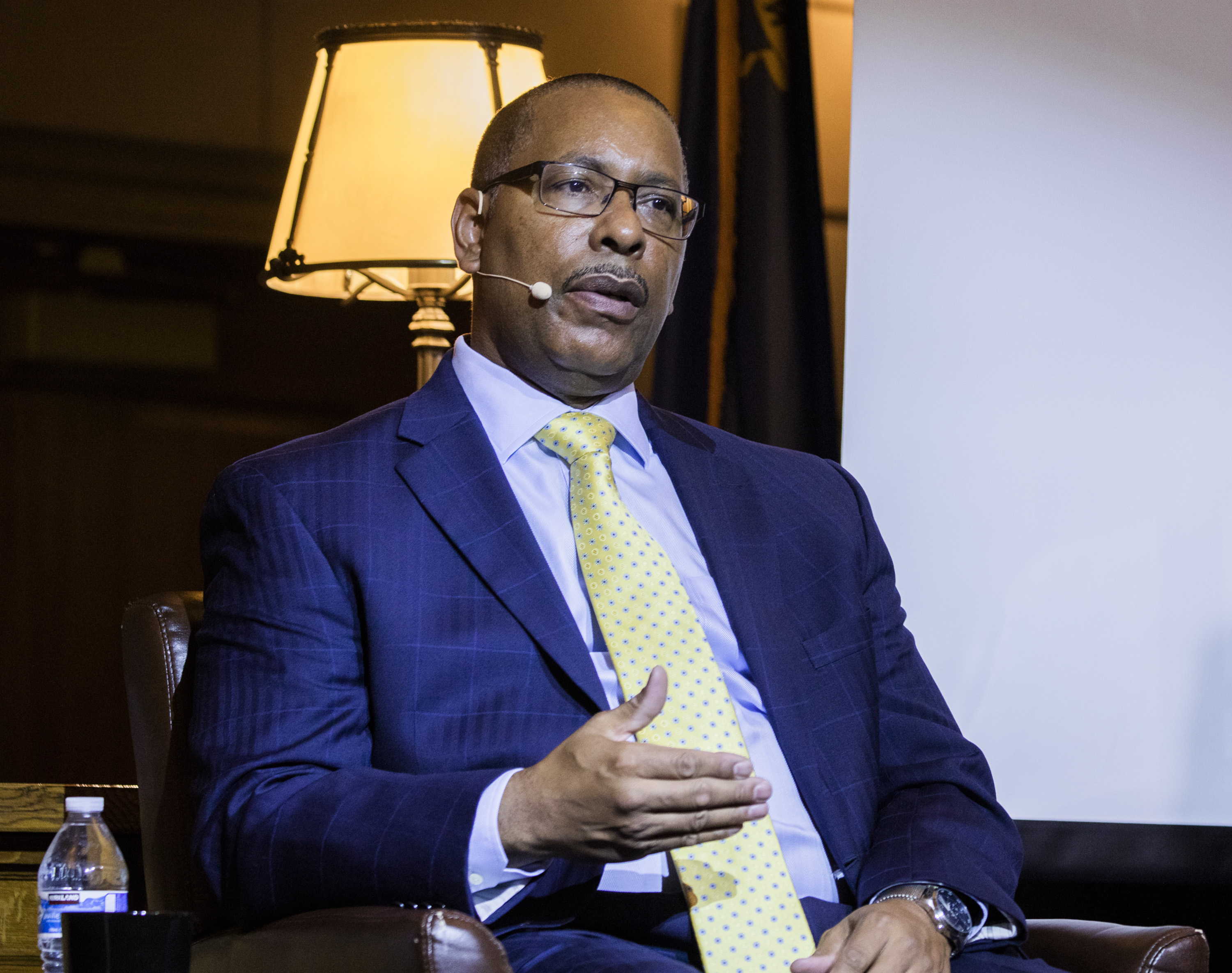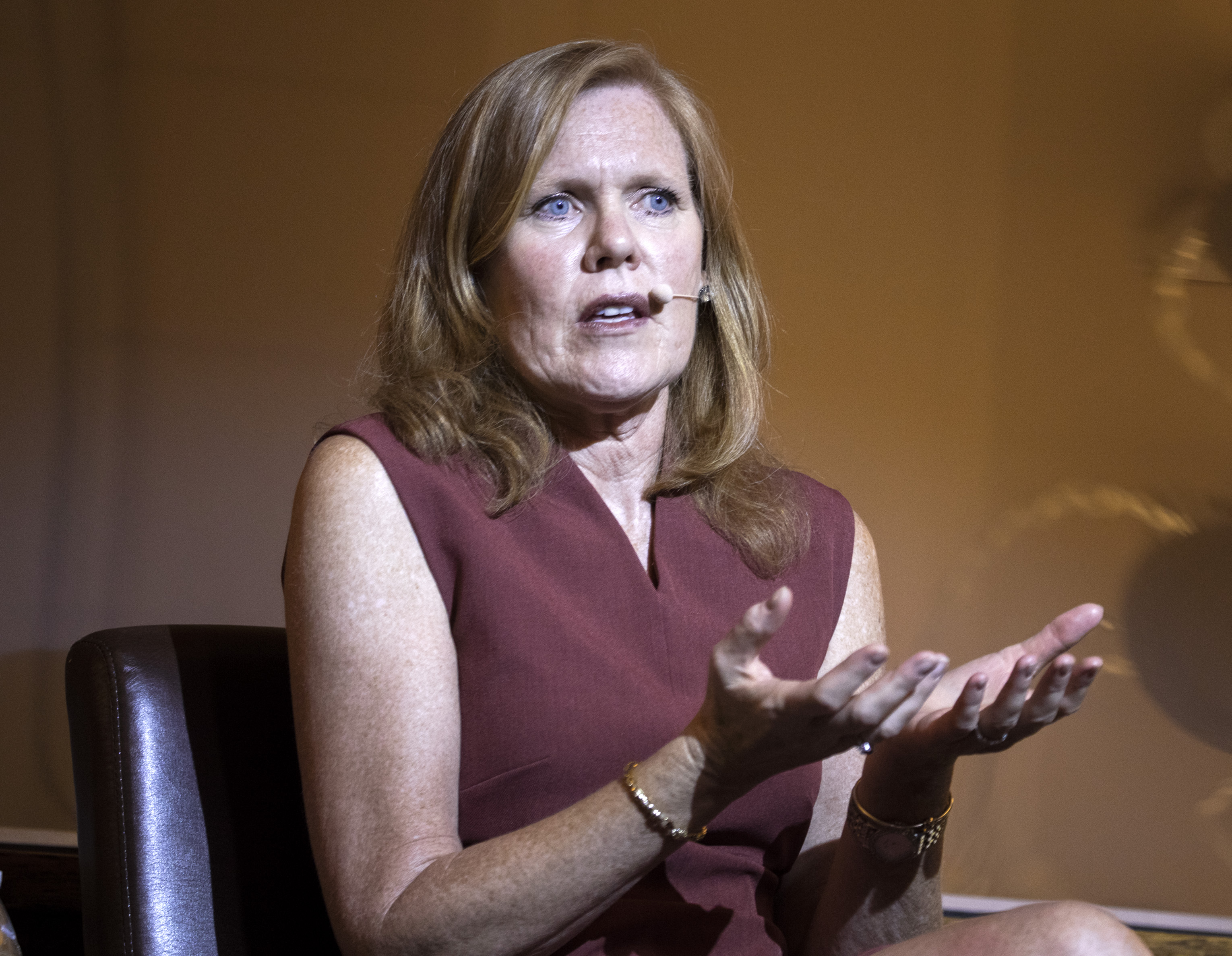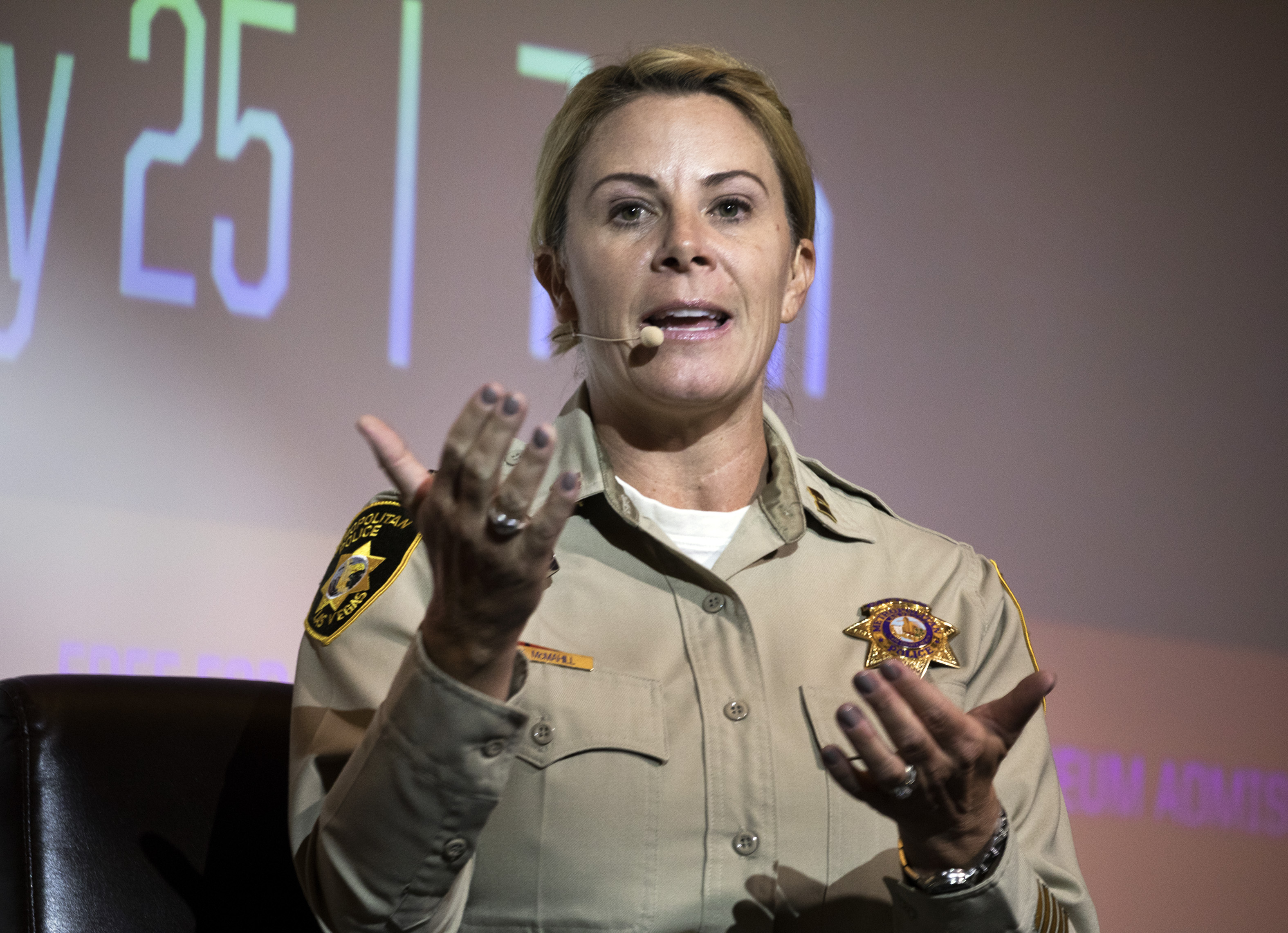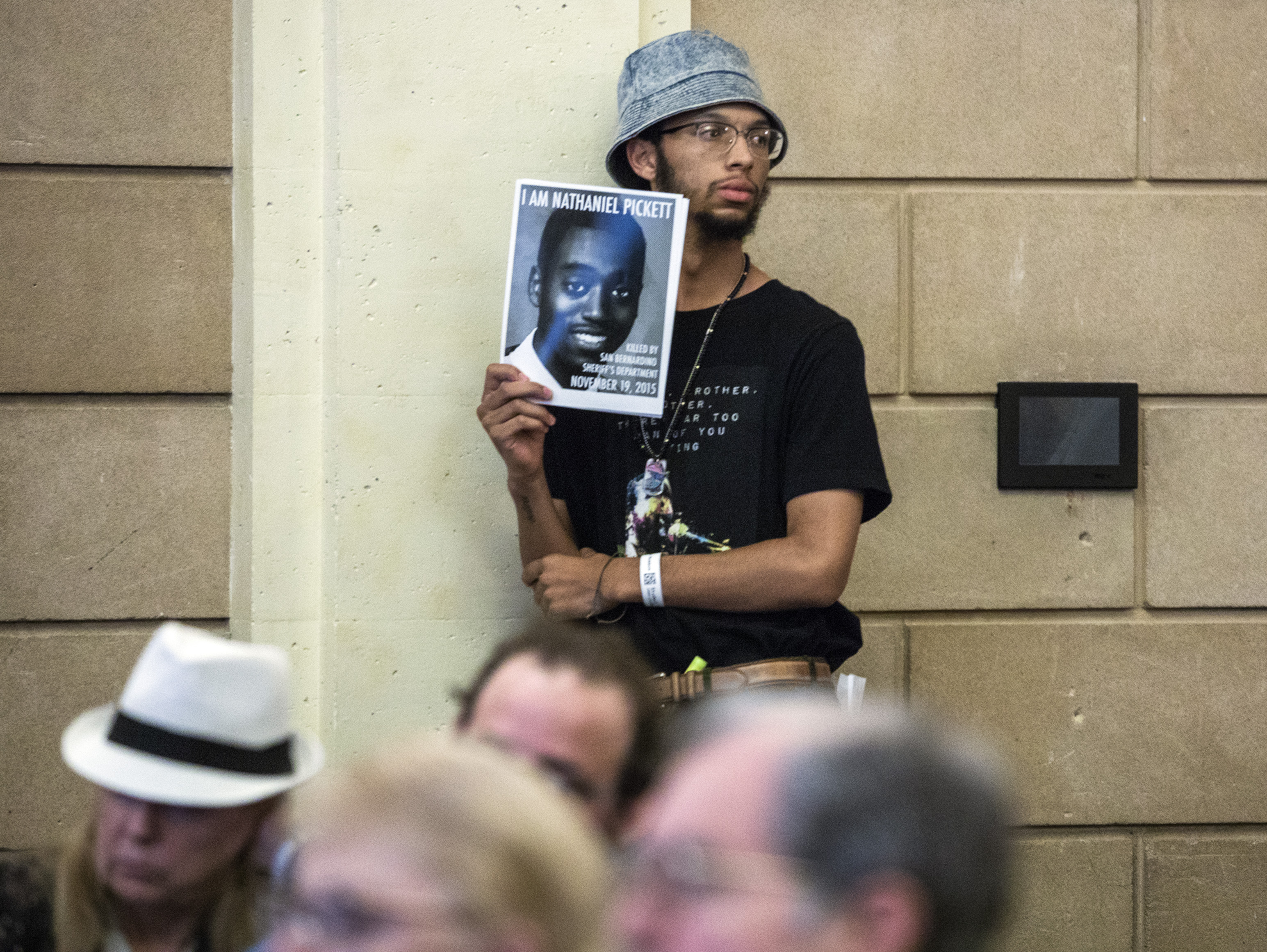Vegas police led the way in overhauling force policies, but it hasn't been a panacea

Eight years ago, the Las Vegas Metropolitan Police Department found themselves with a massive problem: there had been 25 shootings involving officers in 2010, including seven that were fatal — an increase from an average of 15 in each of the three prior years.
The uptick triggered a year-long, five-part investigation by the Las Vegas Review-Journal that catalogued every shooting since 1990, determined Las Vegas had a high number of officer-involved shootings per capita compared to other major cities, and concluded there was a lack of accountability for shootings that were controversial or could have been avoided. The 2011 series, Deadly Force, attracted the attention of the Department of Justice, which offered to help the agency take a critical look at its policies and practices in hopes of reducing the toll.
“We used deadly force 25 times, and about half those times, while not criminal activity, they were unnecessary,” said Metro Capt. Kelly McMahill at a recent event looking back at how the department has changed the way it has handled force. “Lawful but not necessary. That had to be stopped, and we recognized that.”
Hand-in-hand with the Department of Justice, the agency has worked to review its policies and implement 75 recommendations for preventing the use of force. Las Vegas was the first to go through the assessment, and a dozen other agencies across the country have followed suit.
Late in July, current and retired Metro officials, as well as a national researcher with the Crime and Justice Institute and a member of a police community advisory council, appeared at a panel discussion at the Mob Museum in Las Vegas to discuss the overhaul.
The event was subtitled: “How Las Vegas became a national model of reform” — a moniker that didn’t sit well with protesters outside and even some on stage.
“When we say that we’re a model, I’m not sure I’m comfortable with that,” McMahill acknowledged at the discussion. “We have a long way to go and learn.”
Southern Nevada’s increased focus on preventing police shootings has unfolded just as the national conversation about police force hit a fever pitch. The fatal 2014 shooting of Michael Brown, an unarmed black man in Ferguson, Missouri, prompted protests in cities nationwide. The shooting of 12-year-old Tamir Rice in Cleveland, the chokehold death of Eric Garner in New York, and others in subsequent years prompted similar anguish and outrage.
While Las Vegas police detailed changes they’ve made in the past few years to improve tactics and transparency, and a national researcher who reviewed the process praised it, it hasn’t been a panacea for officer-involved shootings. Last year, there were 22 officer-involved shootings. Shortly after the Mob Museum event, the agency experienced five officer-involved shootings in a matter of only eight days.
“We’ve had a tough week at Metro,” Assistant Sheriff Charles Hank told reporters at a press conference on Tuesday about the shooting at a Ross Dress for Less, which marked the 15th officer-involved shooting of 2018.
Some family members of those who died at the hands of a Metro bullet say they’re not satisfied with the overhaul. Several of them sat stone-faced in the audience at the Mob Museum during the presentation and expressed skepticism that much had changed.
“I don’t see reform going on,” said Jackie Lawrence, whose 23-year-old son Keith Childress was unarmed when he was killed on New Year’s Eve in 2015. Police thought he had a weapon, but it turned out to be a cell phone; the police didn’t face charges. “You say that the numbers go down, but why have the numbers gone down? Is it really from your policies?”
Outside, a group of protesters held banners critical of the police.
“We just felt that we needed to call out that false public relations campaign about what’s really happening,” said Kenia Leon, an activist and prison psychologist who said she’d learned of the event through Facebook. “While they make strides, there are still some issues that lead to questions of transparency, corruption.”
Time for change

Retired Metro Assistant Sheriff Greg McCurdy said it became clear more than a decade ago that the agency needed to take action on use of force — so much so that in 2007, the department sent four lieutenants to the Los Angeles Police Department to see how they hold officers accountable after they’ve been involved in a shooting.
“We knew then that it was a problem,” said McCurdy, who has since pursued a career in casino security, consulting and training. “We’ve been looking at this and figuring out, OK, some of these shootings just don’t make sense. There were other things we could’ve done.”
Then came 2010 — what McMahill described as “a brutally ugly year for our police department.”
“Our leadership recognized that we had a problem,” McMahill said. “We understood even before the articles came out that we had to change.”
Jose Solorio, a member of Metro’s 30-person Multicultural Advisory Council, recalls the tension building after the high number of shootings in 2010.
“The community was in uproar. The Latino community, the African American community,” he said. “So this was a very trying time on all sides. But we did make an impact and the sheriff did listen.”
McMahill was the liaison with the Department of Justice at the time Metro decided to partner with the federal agency.
“We literally opened up our doors and it was my job and my boss’s job to actually point out all the things we knew we needed to fix,” she said. “So we gave them documentation. They came in and interviewed hundreds of citizens here in the community, to find out exactly how they felt about our police department, how well they interacted, the tough questions — are they really truly in your communities with you?”
The team did ride-alongs with officers, watched police trainings, came out to Las Vegas a half-dozen times for about a week familiarizing themselves with the department.
“The end result had to be that we made a change, a true change in culture, how we approach deadly force, and really just force in general,” McMahill said.
Opening up to scrutiny

The process Metro experienced was initiated by the Community Oriented Police Services (COPS) office within the Department of Justice. The COPS agency first emerged in 1994 and was the entity that carried out President Bill Clinton’s massive effort to hire 100,000 police officers nationwide.
Since then, it’s broadened its scope to provide technical assistance to agencies that seek it. The month after the Review-Journal series posted, then-Sheriff Doug Gillespie and the then-director of the COPS office discussed a partnership that would help the department address its high rate of shootings.
Las Vegas became the first agency in the country to undergo what’s now known as “collaborative reform.” Since then, 12 other agencies across the country that have experienced series conflicts between their police force and their community — be it officer-involved shootings or other issues — have undergone collaborative reform.
A key piece of “collaborative reform” is securing actual, voluntary collaboration, as opposed to a judge ordering an agency to make reforms and holding them to it by what’s known as a consent decree. Even under those orders, there’s sometimes litigation arising from police departments pushing back on the strictures.
“It was not forced, so when the captain says the leadership was behind this, that was a critical component of the office coming in here,” said Crime and Justice Institute Director Christine Cole, who co-authored an analysis of collaborative reform processes in Las Vegas and elsewhere.
She said the process hasn’t unfolded as well in some other jurisdictions. McCurdy, who’s assisted other departments in reforms, saw it firsthand.
“It became a little more contentious with other departments,” he said. “That’s difficult for anyone, someone going through your dirty laundry … when people are peeling back the layers of your problems, that’s a very painful thing. The more you can have them voluntarily working with you, the more likely you are to succeed and change behavior in police departments.”
Revamping policies

Metro’s changes included moving to “reality-based trainings” where officers are put into more stressful, heart-pumping scenarios in a controlled environment.
“It’s more about decision making under stress,” McCurdy said.
The agency has also devoted 100 hours of its time in the police academy simply to “de-escalation” training. McMahill said officers can get themselves in bad situations that leave them few options but to shoot if they rush into a scene and “[think] they’re Superman.”
She describes “de-escalation” as slowing the momentum of a situation so using force is as unnecessary as possible.
“Unless there’s lives to be lost and we have an active shooter, what we train our guys to do is, take time to slow down, gather more information thru communications or dispatch, gather more resources ... police officers, helicopter, K-9,” McMahill said. “It also means take time to learn information about the individual who you are going to assist: ‘Are they mentally ill? Have we been in this house before?’”
But the agency also recognized that there were some topics that hadn’t been discussed much in training, such as the sanctity of life and the importance of ethics, values and good decision-making.
One of the opening lines of the use of force policy now reads: “It is the policy of this department that officers hold the highest regard for the dignity and liberty of all persons, and place minimal reliance upon the use of force.”
Metro has also had to reckon with racial bias, which remains a concern for activists including the local grassroots group All Shades United.
“White people get to have this privilege and they get to come in contact with police and it isn’t fatal,” said All Shades United Vice President TreShawn Terry, who stood up during the Mob Museum event and held photos of people killed by police.
An analysis conducted during collaborative reform concluded that 90 percent of unarmed subjects in officer-involved shootings were black or Hispanic, and all subjects shot as a result of an officer-initiated stop were black or Hispanic.
The Department of Justice recommended officers be trained in Fair and Impartial Policing as a way to address unconscious bias. That program is based on the assumption that most police are well-intentioned, but subconscious bias can lead to flawed decision-making.
And in 2013, Metro implemented a policy that when someone calls for help and there’s a credible report that an individual is armed, at least three officers and one supervisor must go to the scene. The protocol is meant to ensure there’s someone who can manage the situation, guide tactics, gather intelligence and coordinate additional resources if needed.
The changes haven’t always been easy. McMahill recalls that in one group the DOJ was observing as part of collaborative reform, the participating officers didn’t appear to be taking the training well.
“We had situations where captains, lieutenants, sergeants weren’t paying attention and we talked about that at the academy,” McCurdy said. “That’s no longer acceptable. I think that’s very important that when they come to the department that they hear right from the beginning about the changes that will continue to take place.”
In spite of the changes, the Department of Justice noted some of its recommendations haven’t been implemented — most notably, the video recording of officer interviews. The police union has also discouraged its officers from granting such interviews, and Metro says the practice is not common in other parts of the country.
“Assessors stress that ‘common practice’ is not ‘best practice’ and the circumstances facing LVMPD and the greater Las Vegas community warrant such a practice as a way to enhance trust in the way the department investigates [officer-involved shootings],” said a 2014 DOJ assessment.
When a shooting happens
Now, when there’s an officer-involved shooting, the captain of internal oversight does a press briefing within 3-4 hours of the incident. Within 72 hours, there’s another press conference where the agency offers up photographic evidence, body camera footage and other details of the incident, including the officer’s name, how long they’ve been on the force and their age.
“Our commitment to the community in 2013 was that we would never change the way that we do this. And across the country, you won’t find this,” McMahill said. “What we believe is our community, when you use deadly force, has an absolute right to know the facts as we know them.”
Lawrence, however, said after the presentation that she felt the waiting period was an opportunity to dig up dirt on the victim. Her unarmed son was shot after authorities initially thought he was a fugitive wanted for attempted murder. That turned out to be false, but police brought up at a press conference after his death that he had skipped out on a sentencing hearing for charges including armed robbery and kidnapping.
“That’s what you’re doing in that four-hour period,” she said in a brief interview after the Mob Museum event. “You’re not coming out there to tell the community what’s going on. You’re getting back on there to destroy somebody’s character.”
In investigating the shootings, the case goes through two levels of review: through a “Critical Incident Review Team” that examines the officer’s actions and how well they followed policy and tactics, and then through a “Use of Force Review Board,” which includes private citizens and helps decide whether the officer’s actions were within policy and within law.
In the past, the board could only rule that a shooting was “justified” or “not justified.”
“That’s ridiculous,” McMahill said. “What that really means is yes, you either were lawful, or you were not. So, we almost never, ever had an unjustified. That was a problem. That was not accountability.”
Since 2013, though, the scale has included more shades of gray. The Use of Force Review Board can vote that a shooting has “administrative approval,” that there were flawed tactics or decision-making, that there’s a flaw in Metro’s policy or training, or that there’s “administrative disapproval” and the use of force is not justified.
The shooting of Lawrence’s son, Childress, was given “administrative approval.”
More action against officers

In its 2014 evaluation, the Department of Justice noted that the Use of Force Review Board had issued an unprecedented number of determinations critical of officers since implementing collaborative reform. Metro “has recommended significant remedial action, including training, discipline, one demotion, and the termination of two officers.”
A review of force board determinations from 2013 to 2015 found 37 “administrative approvals” and three shootings where officers were faulted for flawed tactics or decision-making. Still, the lack of full-fledged criminal prosecutions disturbs Leon, the protester.
“We want justice. We want officers that have to be charged and to go through an actual trial for murder,” she said.
In one of the most recent instances of police avoiding a trial, a grand jury decided this summer not to indict former officer Kenneth Lopera in the death of 40-year-old Tashii Brown at The Venetian casino in May 2017. The officer, who suspected Brown of stealing a truck, chased Brown, tased him, punched him in the head and put him in a chokehold.
Brown died by suffocation from the police restraint, but the coroner’s office also said an enlarged heart and methamphetamine use contributed to the death. District Attorney Steve Wolfson initially filed charges against Lopera, before the case was forwarded to the grand jury; after they declined to indict, his office said they’d stop pursuing charges.
“I thank Steve Wolfson for doing the right thing,” Steve Grammas, president of the union that represents Metro’s rank-and-file officers, told the Las Vegas Review-Journal after the decision.
Nevada ACLU director Tod Story, on the other hand, said the decision not to indict Lopera was “a travesty of justice.”
A mother’s story
Alma Chavez was one of attendees at the Mob Museum event, where she grasped a cross and photos of her son and other young people killed in police shootings. After the forum concluded, she described it as a “circus.”
Her 23-year-old son Rafael Olivas had been going through an emotional time in 2011 because the family had just lost their home and he’d been diagnosed with an illness of the stomach, which left him without a job.
“I, because I had faith in the authorities, called so that they would help me take him to a doctor so he’d be taken out of the critical moment he was having. My son left the house with a knife and I feared that he was going to hurt himself,” Chavez said in Spanish, between tears. “I told them that my son had left with a knife. When they arrived, they didn’t even try to talk with him … they killed my son.”
On the 911 call Chavez made, Olivas was overheard swearing and making violent threats but also suggesting police were going to kill him. According to the authorities, Olivas carried a knife and got close to police, who shot him after first firing at him with less-lethal bean-bag rounds when he refused to obey orders to put down the weapon.
She doesn’t only blame officers for his death, but for keeping her away from his body in his final moments.
“They took away my rights as a mom,” Chavez said. “To not even let me close his eyes, be with him when he was dying.”
Chavez noted that Metro hasn’t adopted all the changes recommended by the Department of Justice, and argues that officials needed better training to know how to treat people going through emotional crises.
“I’m here because I’d like to see a change in the police, but a real change, because I don’t want other mothers or families to suffer what I’ve suffered these last seven years,” she said. “They took my son’s life, but they destroyed mine and my family’s.”
McMahill offered an apology at the conclusion of the event. She’s a mother of five, and says she couldn’t fathom losing a child like some of the attendees had.
“If anybody in this room has had somebody that they love died or seriously injured in the hands of a police officer, I’m sorry. I’m not saying that we were wrong because I don’t know the situation,” she said.
And she invited the families to continue to engage with police as they walk through their grief.
“I know the men and women in my area command, the 218 that are there, I can tell you right now not a single one of them wants to take a human life. But when there’s so much anger and pain it’s very difficult to talk through that, it’s very difficult to get through that,” she said.
“But, for anybody who’s willing and wants to have that conversation, I’m here, and you can start with me.”

